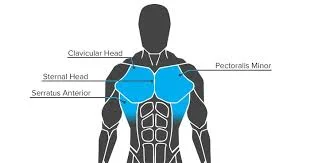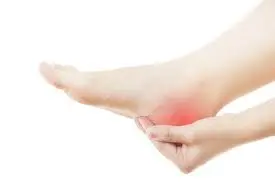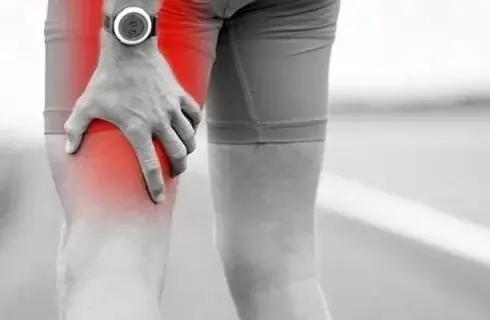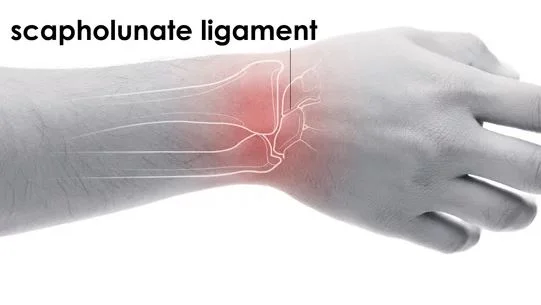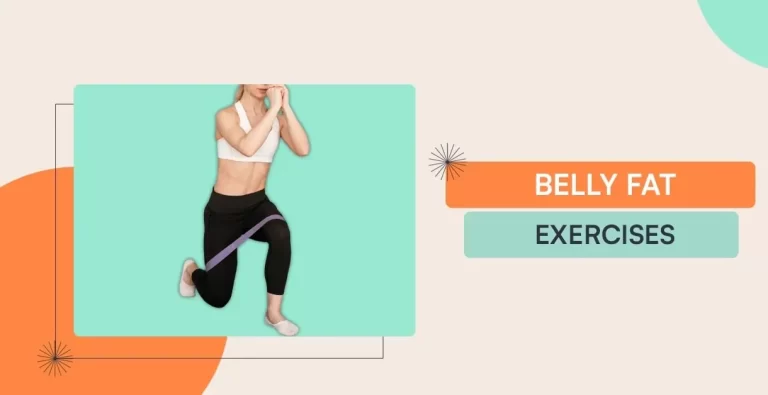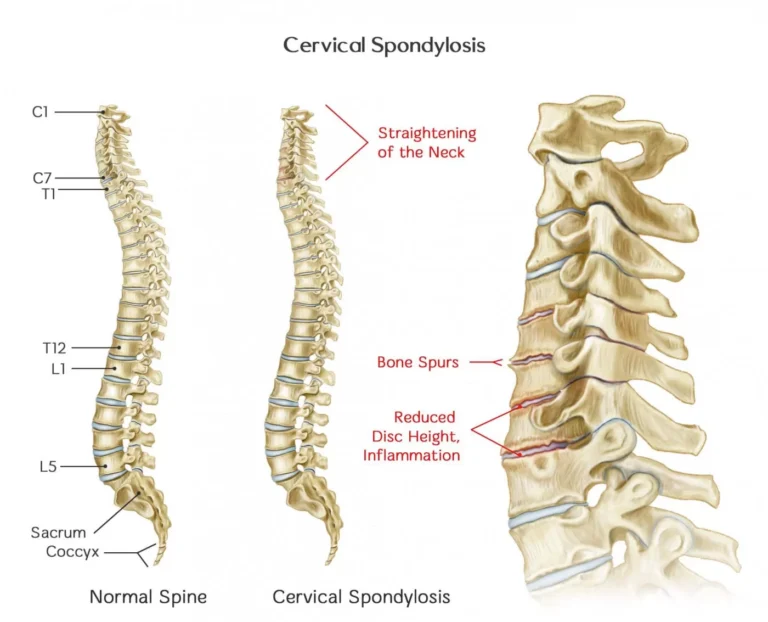Piriformis Muscle Pain
Introduction
Piriformis muscle pain often occurs when the muscle becomes tight, inflamed, or irritated. This discomfort can also lead to piriformis syndrome, a condition where the muscle compresses or irritates the sciatic nerve, causing pain, tingling, or numbness that radiates from the buttock down the back of the leg. This condition is often mistaken for sciatica due to its overlapping symptoms.
Common causes of piriformis pain include overuse from physical activity, prolonged sitting, poor posture, or trauma. Identifying and addressing the underlying cause is essential for effective management and relief.
- Piriformis muscle pain is suggested when you experience lower back and buttock pain that travels down your leg and into your foot.
- There are numerous causes of this pain, however the Piriformis syndrome is the main cause.
What is Piriformis muscle pain?
The most frequent risk factor for piriformis muscle pain is overuse or injuries from sports, although symptoms can also be caused by other disorders. Piriformis muscle pain is typically caused by compression or contraction of the piriformis muscle on specific regions of the sciatic nerve.
Causes of the piriformis muscle pain?
- Excessive exercise causes the piriformis muscle to be overused.
- Running and other repetitive exercises are good ways to work this muscle.
- while the patient is moving bulky items.
- when the patient is ascending stairs a lot.
- A vehicle accident
- A bad fall
- A direct strike in sports
- An abrupt hip twist.
Signs & Symptoms of piriformis muscle pain?
- The patient primarily has muscle ache.
- When the patient tries to run, climb stairs, or stroll, they experience excruciating pain.
- Usually, a certain position causes this muscle pain:
- Running
- Perched
- Pressing down on the piriformis muscle
- Stair climbing
- The primary sign of piriformis muscle pain is sciatica, which denotes leg pain.
- The patient experiences tingling and numbness in the buttocks, which radiates down the back of the leg.
- Additionally, the patient has buttock soreness.
- The patient has trouble staying in a sitting position, and the pain gets worse the longer they sit.
Risk factors of this piriformis muscle pain?
- The following are risk factors for the piriformis muscle:
- If they do, inflammation such as muscular sprains and overuse
- The buttocks typically sustain blunt injuries.
- There is a hematoma in the piriformis muscle.
- If a cyst or tumor develops in the muscle’s surrounding tissue, scarring of the muscle will result.
What is the diagnosis of piriformis muscle pain?
- Electromyography, CT, MRI, and injection tests are used to diagnose or rule out the reason of the muscular soreness.
- In order to determine the source of the pain, the doctor first reviews the patient’s medical history and symptoms.
- The patient measures the affected lower limb’s range of motion during the examination.
- To rule out other possible reasons of the pain, several imaging tests are also performed.
- The doctor can diagnose arthritis or a ruptured disk that is causing pain with the use of an MRI and a CT scan.
Treatment of piriformis muscle pain?
The RICE approach is applied to pain reduction during the initial stages of pain management.
- R-rest = When a patient experiences muscle soreness, they are taking it easy, which includes avoiding prolonged sitting and heavy lifting.
- I-ice = Applied to the patient’s painful location to relieve pain; additionally, the patient is given frozen peas and an ice pack to reduce swelling and agony.
- C-compression = Used to reduce swelling by applying a compression bandage to the painful location.
- E-elevation: To lessen swelling, the lower leg is elevated.
- The chronicity of the condition determines how the piriformis muscle is treated.
- In addition to medicinal therapies like injectable therapy, opioids, NSAIDs, and occasionally surgery, the treatment consists of physical therapy, stretching, and exercise.
- Orthopedists, physical therapists, osteopathic physicians, sports medicine physicians, and occupational therapists are among the medical experts who treat piriformis pain.
- Exercise, stretching, and applying a cold pack are some of the home remedies for piriformis muscle pain that can help alleviate its symptoms and promote muscle recovery.
- Individual flexion, rotation, and other fundamental actions that stretch the piriformis muscle are performed as part of the treatment, which also includes rest and beginning physical therapy.
- In addition to applying cold packs and electrical stimulation, a physical therapist massages the gluteal soft tissues and lumbosacral regions.
- The patient is advised by occupational therapy to refrain from extended sitting, which exacerbates muscle problems.
- In cases when sciatic nerve pressure is caused by pain in the piriformis muscle, surgical intervention is necessary to relieve the pressure.
- Certain patients benefit from the transrectal massage that is administered as part of the therapeutic ultrasound procedure.
- Treatment with medication for piriformis muscle pain
- The physician advises receiving a local injection of anesthetic medications like bupivacaine and lidocaine.
- Take over-the-counter oral nonsteroidal anti-inflammatory medications (NSAIDs), including ibuprofen.
- Some physicians prescribe corticosteroids in addition to piriformis muscle relaxants and medications.
- Additionally, over-the-counter medications such as naproxen are administered to the patient.
Physical Therapy Treatment for piriformis muscle pain?
Stretching and massage are used in physical therapy to relieve piriformis muscle pain.
Stretching for the piriformis muscle pain:
- Supine piriformis stretch
- Cross-body piriformis stretch
- Knee-to-chest piriformis stretch
- 4-point piriformis stretch
- Standing piriformis stretch
Supine piriformis stretch:
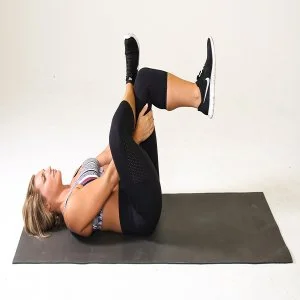
- For the stretching posture, the patient lies on his or her back with both legs flat.
- Pull the knee joint toward the opposing knee while starting with the ankle joint until you feel a stretch.
- Avoid applying more force on the ankle/knee joint than is comfortable.
- After 30 seconds of holding this stretching position, gradually move back to the beginning position.
- Do the three full sets of stretches every day.
Cross-body piriformis stretch:
- Using the other hand, the patient pushes the bent leg’s knee straight across their body until they get a stretch.
- The knee is not forced into the floor by the patient.
- After 30 seconds of holding this stretching position, gradually move back to the beginning position.
- Do the three full sets of stretches every day.
Knee-to-chest piriformis stretch:
- Both of the patient’s legs are bent while they lie on their back.
- Next, position the injured leg’s ankle joint close to the knee joint on the other leg’s thigh.
- Until the affected side buttock feels stretched, the patient is using both hands to gently pull the unaffected foot off the ground.
- After 30 seconds of holding this stretch position, slowly lower the foot back to the floor.
- Do the three full sets of stretches every day.
4-point piriformis stretch:
- All four limbs are stretched first.
- Next, straighten the other leg’s knee joint and drop the hip joint toward the floor until the affected hip joint feels deeply stretched.
- Do the three full sets of stretches every day.
Standing piriformis stretch:
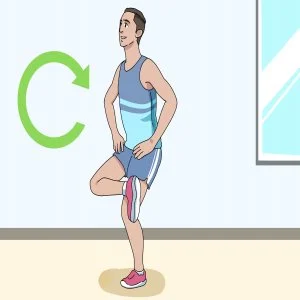
- The standing position is where you start.
- In the standing posture, place the affected leg over the other leg’s knee joint.
- Then, with the hip joint lowered off o the ground at a 45-degree angle, bend to the standing leg and attempt to reach number 4.
- Hold
- After that, switch to your legs and perform this stretching position three times.
Massage for the piriformis muscle pain:
- Foam roller massage
- Tennis ball massage
- Sitting on a ball
Foam roller massage:
- The ends of the foam roller are pointing away from these sides while the patient sits on it.
- The feet should be level on the floor in front of the hands that are bearing the weight behind the body to begin this exercise.
- Next, cross one ankle joint over the knee joint on the other side.
- Lean sideways such that the crossed leg’s hip joint bears the majority of the weight.
- Feel the pain go away as you rock back and forth on the roller.
- After up to 60 seconds of continuous massage, the patient is instructed to switch to the opposite side.
Tennis ball massage:
- The patient is Place the ball beneath the side of the left hip joint while seated on the ground.
- After that, keep rolling over this area for as long as a minute till the pain goes away.
- On the opposite side, repeat this message.
Sitting on a ball:
- Under the hip joint, the patient is sitting with a tennis ball and another ball of a comparable size.
- The patient can perform this massage while sitting or on the ground.
- In order to place the sole of the ball against the opposing thigh, the patient must maintain both legs straight or bend one side with the ball beneath the hip joint.
- After that, gently press down until they start to feel uncomfortable.
- Until the patient has less pain in the tender spot, the procedure is repeated on the same side.
- On the opposite side, repeat this practice.
What is the prevention of piriformis muscle pain?
- Before the run, perform the warm-up, stretch, and each activity.
- Then, progressively increase the level of physical activity and workout intensity.
- Do not run over uneven ground or up and down hills.
- Get up and move around. avoiding prolonged periods of inactivity while sitting or lying down.
FAQs
What causes the piriformis muscle to tighten?
The piriformis muscle can be stretched to reduce pain and stop additional tightness. People can stretch their piriformis while sitting or while lying down.
How is the piriformis massaged?
Piriformis Massage: Piriformis Stretches and Self-Massage…
You can use a foam roller or a tennis-ball-sized ball to massage your piriformis muscle at home. A firmer ball results in a more intensive massage, while a soft ball offers a more soothing one. The massage shouldn’t be excruciatingly unpleasant, but it should be just a little uncomfortable.
Which pain reliever works best for piriformis pain?
Drugs to Treat Piriformis Syndrome Acetaminophen and other pain analgesics work by preventing the brain from receiving pain signals. …
Ibuprofen, aspirin, and naproxen are examples of nonsteroidal anti-inflammatory medicines (NSAIDs) that relieve pain and inflammation.
Which position is ideal for piriformis relaxation?
How Piriformis Syndrome Affects Sleep
This entails sleeping on an adjustable bed or in a recliner. Using a wedge pillow can also provide you with support and comfort.
How bad is piriformis pain?
With medication and lifestyle modifications, the majority of patients with piriformis syndrome recover. Make sure you follow your doctor’s advice because neglecting to treat this condition might result in irreversible nerve damage.
How quickly can piriformis pain be resolved?
Physical therapy, exercise, and stretching are the cornerstones of treatment for piriformis syndrome, even if prescription treatments such muscle relaxants, pain relievers, and anti-inflammatory drugs may be suggested. Gait modifications are one type of specific treatment. increased sacroiliac joint motion.
At what age does piriformis pain typically manifest?
Bad posture: The piriformis muscle can be strained while sitting or standing incorrectly. Age: Piriformis syndrome can affect persons of any age, however it is most prevalent in those between the ages of 40 and 60.
What may be confused with piriformis?
Many times, piriformis syndrome is mistaken for sciatica or other problems. On rare occasions, it might be a sign of pelvic osteomyelitis.
How can someone who has piriformis pain sit?
Maintaining optimal body alignment can be achieved by sitting upright with good posture and keeping your feet flat on the floor. Make use of a cushion or back support. When sitting, it’s critical to have lower back support.
Which workout is ideal for those with piriformis syndrome?
Stretching the piriformis (from straight legs)
Do this two or four times.
Repeating these instructions with your other leg is a smart idea.
How can I prevent nighttime piriformis pain?
To maintain your spine in alignment, avoid sleeping on your stomach, but if you’re accustomed to it, place a thin pillow beneath your pelvis. Choose a mattress that is medium-firm.
Does walking help piriformis?
An excellent, low-impact method of piriformis syndrome pain relief is walking. Take your time if you’re starting a new walking regimen! Choose a time or distance that works for you, then work your way up from there.
Why does the piriformis muscle get so tight?
having tense muscles as a result of inactivity. causing harm to the piriformis muscle by incorrectly lifting anything. failing to adequately stretch after engaging in physical exercise or warming up before.
What is the sensation of an irritated piriformis muscle?
The majority of patients report sciatica-like pain down the back of the thigh, calf, and foot, along with acute buttock soreness. The following are typical signs of piriformis syndrome: The buttocks hurt dullly.
How may piriformis pain be relieved?
Stretching exercises, massage, and pain and swelling medication are possible forms of treatment. You might receive a dose of steroid medication if these don’t work. You might need to minimize activities like running and rest the muscle until the pain subsides.
References
- Siraj, S. A., & Dadgal, R. (2022). Physiotherapy for Piriformis syndrome using sciatic nerve mobilization and piriformis release. Cureus. https://doi.org/10.7759/cureus.32952
- Piriformis syndrome. (2024, November 1). Cleveland Clinic. https://my.clevelandclinic.org/health/diseases/23495-piriformis-syndrome


